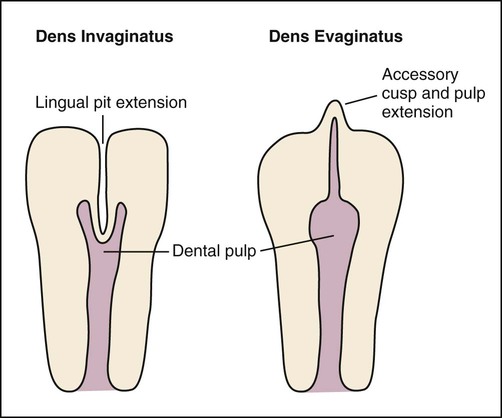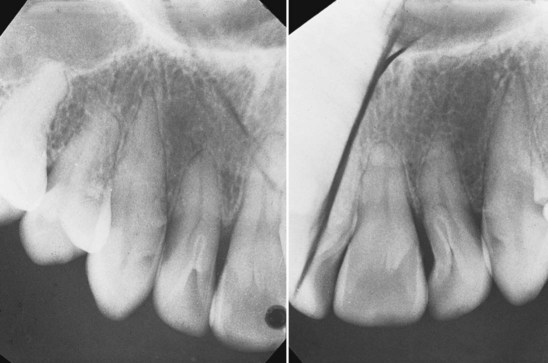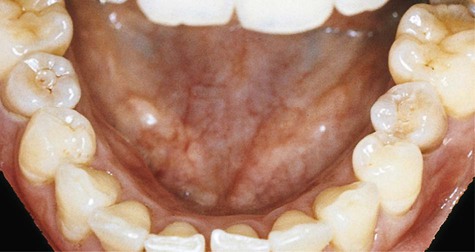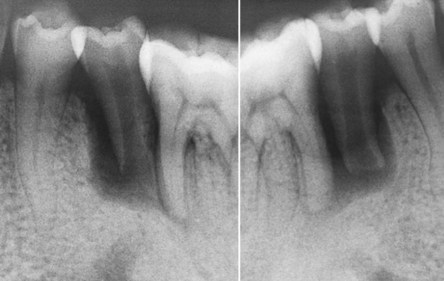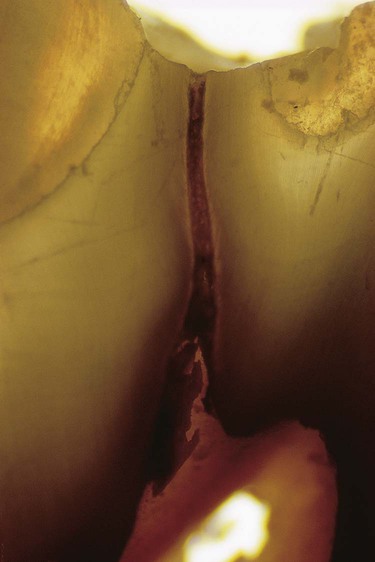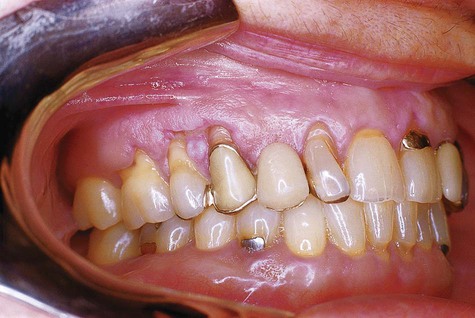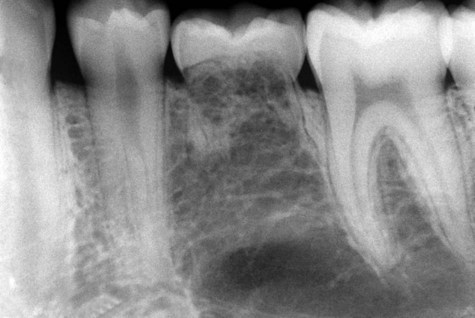Abnormalities of Teeth
Alterations in Size
Microdontia
In focal, or localized, microdontia, a single tooth is smaller than normal. The shape of these microdonts is often altered with the reduced size. This phenomenon is most commonly seen with maxillary lateral incisors in which the tooth crown appears cone or peg shaped, prompting the designation peg lateral (Figure 16-1). An autosomal-dominant inheritance pattern has been associated with this condition. Peg laterals are of no significance other than cosmetic appearance. The second most commonly seen microdont is the maxillary third molar, followed by supernumerary teeth (Figure 16-2).
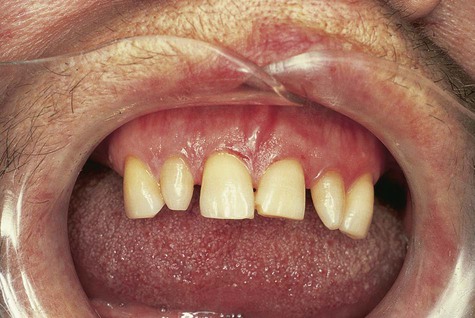
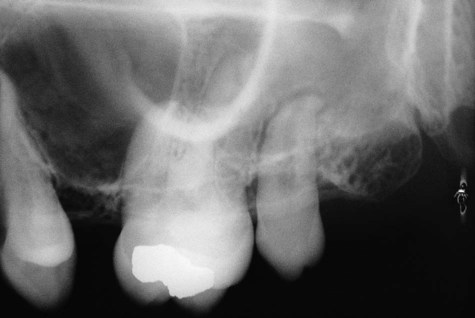
Alterations in Shape
Gemination
Gemination is the fusion of two teeth from a single enamel organ (Figure 16-3). The typical result is partial cleavage, with the appearance of two crowns that share the same root canal. Complete cleavage, or twinning, occasionally occurs, resulting in two teeth from one tooth germ. Although trauma has been suggested as a possible cause, the cause of gemination is unknown. These teeth may be cosmetically unacceptable and may cause crowding.
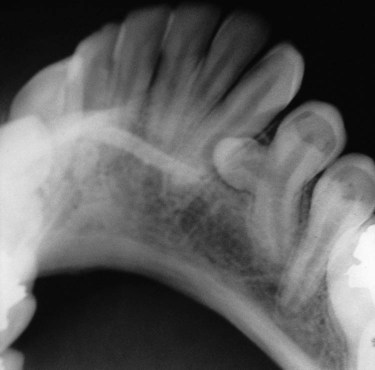
Fusion
Fusion is the joining of two developing tooth germs, resulting in a single large tooth structure (Figures 16-4 and 16-5). The fusion process may involve the entire length of the teeth, or it may involve the roots only, in which case cementum and dentin are shared. Root canals may also be separate or shared. It may be impossible to differentiate fusion of normal and supernumerary teeth from gemination. The cause of this condition is unknown, although trauma has been suggested.
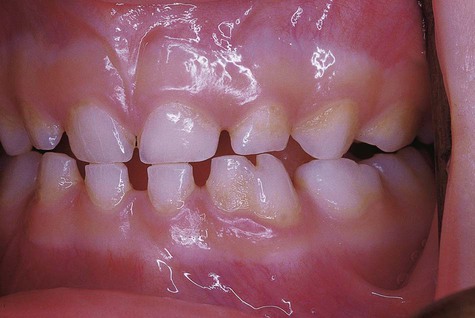
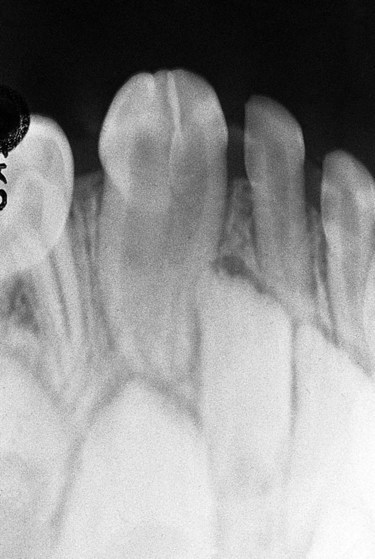
Concrescence
Concrescence is a form of fusion in which adjacent, already formed teeth are joined by cementum (Figure 16-6). This may take place before or after eruption of teeth and is believed to be related to trauma or overcrowding. Concrescence is most commonly seen in association with the maxillary second and third molars. This condition is of no significance, unless one of the teeth involved requires extraction. Surgical sectioning may be required to save the other tooth.
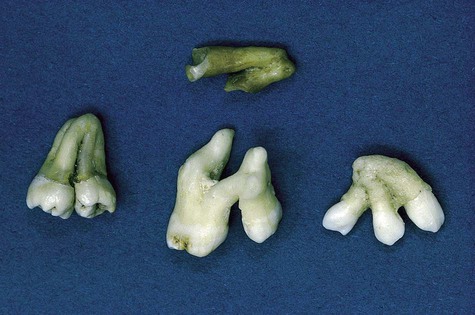
Dilaceration
Dilaceration is an extraordinary curving or angulation of tooth roots (Figure 16-7). The cause of this condition has been related to trauma during root development. Movement of the crown or of the crown and part of the root from the remaining developing root may result in sharp angulation after the tooth completes development. Hereditary factors are believed to be involved in a small number of cases. Eruption generally continues without problems. However, extraction may be difficult. Obviously, if root canal fillings are required in these teeth, the procedure is challenging.

Dens Evaginatus
Dens evaginatus is a relatively common developmental condition affecting predominantly premolar teeth (Leung’s premolars) (Figures 16-10 to 16-12). It has been reported almost exclusively in Asians, Inuits, and Native Americans. The defect, which is often bilateral, is an anomalous tubercle, or cusp, located at the center of the occlusal surface. Because of occlusal abrasion, the tubercle wears relatively quickly, causing early exposure of an accessory pulp horn that extends into the tubercle. This may result in periapical pathology in young, caries-free teeth, often before completion of root development and apical closure, making root canal fillings more difficult. Judicious grinding of the opposing tooth or the accessory tubercle to stimulate secondary dentin formation may prevent the periapical sequelae associated with this defect. Sealants, pulp capping, and partial pulpotomy have been suggested as measures to allow complete root development.
Taurodontism
Taurodontism is a variation in tooth form in which teeth have elongated crowns or apically displaced furcations, resulting in pulp chambers that have increased apical-occlusal height (Figure 16-13). Because this abnormality resembles teeth in bulls and other ungulates, the term taurodontism was coined. Various degrees of severity may be seen, but subclassifications that have been developed to describe them appear to be of academic interest only. Taurodontism may be seen as an isolated incident, in families, and in association with syndromes such as Down syndrome and Klinefelter’s syndrome; it was also seen in the now-extinct Neanderthals. Although taurodontism is generally an uncommon finding, it has been reported to have a relatively high prevalence in Eskimos, and incidence has been reported to be as high as 11% in a Middle Eastern population. Other than a possible relationship to other genetically determined abnormalities, taurodontism is of little clinical significance unless the tooth becomes nonvital, in which case it becomes a challenging endodontic problem. No treatment is required.
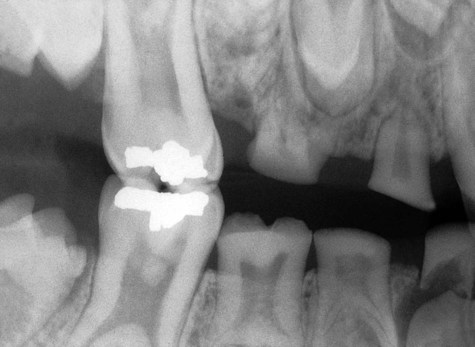
Enamel Pearls
Droplets of ectopic enamel, or so-called enamel pearls, may occasionally be found on the roots of teeth (Figure 16-14). They occur most commonly in the bifurcation or trifurcation of teeth but may appear on single-rooted premolar teeth as well. Maxillary molars are more commonly affected than mandibular molars. These deposits are occasionally supported by dentin and rarely may have a pulp horn extending into them. This developmental disturbance of enamel formation may be detected on radiographic examination. It generally is of little significance except when located in an area of periodontal disease. In such cases, it may contribute to the extension of a periodontal pocket, because a periodontal ligament attachment would not be expected and hygiene would be more difficult.
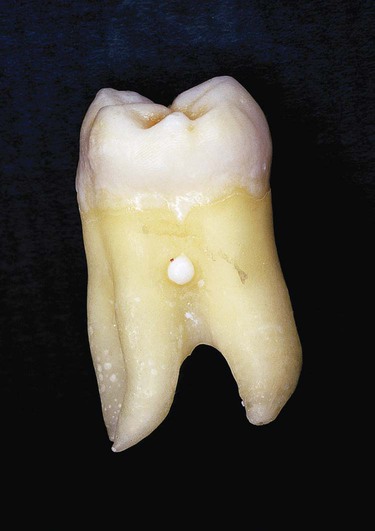
Attrition, Abrasion, Erosion
Abrasion is the pathologic wearing of teeth caused by an abnormal habit or abnormal use of abrasive substances orally (Figures 16-15 and 16-16). Pipe smoking, tobacco chewing, aggressive toothbrushing, and use of abrasive dentifrices are among the more common causes. The location and pattern of abrasion are directly dependent on the cause, with so-called toothbrush abrasion along the cementoenamel junction an easily recognized pattern.
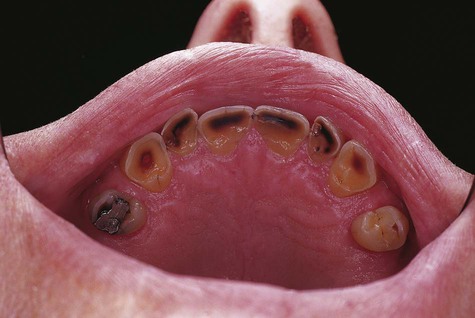
Erosion is the loss of tooth structure through a nonbacterial chemical process (Figure 16-17). Most commonly, acids are involved in the dissolution process from an external or an internal source. Externally, acid may be found in the work environment (e.g., battery manufacturing) or in the diet (e.g., citrus fruits, acid-containing soft drinks). The internal source of acid is most probably regurgitation of gastric contents. This may be seen in any disorder of which chronic vomiting is a part. Self-induced vomiting, as a component of bulimia or, less commonly, anorexia nervosa, has become an increasingly important cause of dental erosion and other oral abnormalities. The pattern of erosion associated with vomiting is usually generalized tooth loss on the lingual surfaces of maxillary teeth. However, all surfaces may be affected, especially in individuals who compensate for fluid loss by excessive intake of fruit juices. In many cases of tooth erosion, no cause is found.
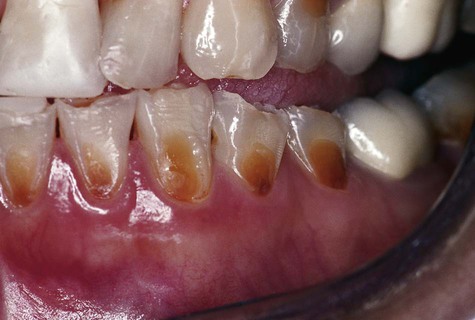
Alterations in Number
Anodontia
Absence of teeth is known as anodontia. This condition is further qualified as complete anodontia, when all teeth are missing; as partial anodontia or hypodontia, when one or several teeth are missing (Figure 16-18); as pseudoanodontia, when teeth are absent clinically because of impaction or delayed eruption; or as false anodontia, when teeth have been exfoliated or extracted. Partial anodontia is relatively common. Congenitally missing teeth are usually third molars, followed by second premolars and maxillary lateral incisors.
Stay updated, free dental videos. Join our Telegram channel

VIDEdental - Online dental courses


